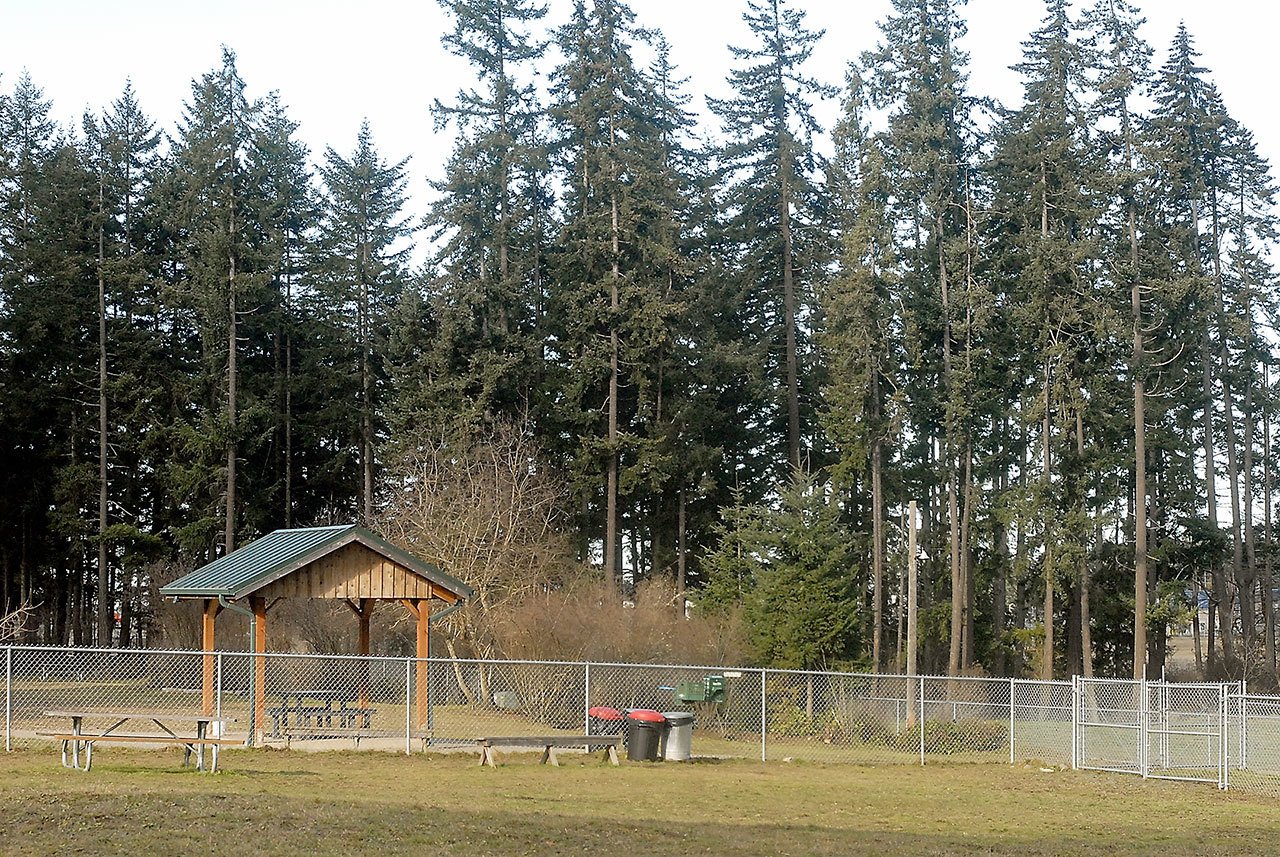PORT ANGELES — After years of controversy and occasional protests, trees in Lincoln Park will be removed to increase flight path visibility for William R. Fairchild International Airport.
The Port Angeles City Council and Port of Port Angeles board of commissioners agreed at a joint meeting Monday in City Hall to draw up an avigation agreement within 60 days to cut down an estimated 400 obstructive trees in four areas on 2.4 acres of the 147-acre park.
Port commissioners voted unanimously to move forward with the agreement in the first joint meeting of the elected officials in more than two years.
The city council voted 6-1 to put together the agreement, with Councilman Michael Merideth dissenting.
The city owns the park, and the port owns the airport across South L Street from the park, where trees in the southwest section of Lincoln Park just east of the Port Angeles BMX Track obstruct the flight path, according to the Federal Aviation Administration.
The avigation easement — a right of overflight above the park — will guarantee that Lincoln Park’s trees will not obstruct 5,000 feet of the airport’s runway, Jerry Ludke, port airport and marina manager, said Tuesday.
“We want some sort of permanent fix for this problem, where if the trees grow up into [the flight path] that there is an agreement in place to take them down,” Ludke said.
Mayor Patrick Downie said Tuesday the “net result” of the agreement will be the removal of Douglas firs that Ludke estimated are about 100 feet tall.
“The cutting of trees will be less than it was initially anticipated,” he said.
Ludke said a former plan that called for the removal of more than 1,000 trees would have allowed for more precise instrument approaches to the runway in inclement weather.
It also would have regained the full runway length of 6,350 feet.
Downie said Tuesday the agreement likely will be subject to a public hearing.
“There probably needs to be something of that sort given the controversial nature of it in the first place,” he said.
Four areas in the southwest part of the park at the corner of West Lauridsen Boulevard and South L. Street near the BMX track and along West Lauridsen Boulevard would see trees removed under the plan, Ludke said.
Protesters who have showed up at past city council meetings when Lincoln Park tree removal was discussed were not present at Monday’s meeting, but the issue is still out there, Councilman Lee Whetham said.
“We’re still battling within our community on whether the trees should stay or go,” he said.
“I firmly believe we need to support our airport and its operations and its stability to help our community here.”
A four-step process has been in place to restore full use of Runway 26, Fairchild’s main runway, since 2010.
It includes a 2013 master plan for Lincoln Park, an environmental assessment to decide on alternatives for removing the obstructions, devising an avigation easement and removal of the trees if the assessment said it was necessary, Ludke said in his presentation at the joint meeting.
The Federal Aviation Administration required an Airport Master Plan update in early 2015 before the environmental assessment was conducted in order to determine the critical aircraft at the airport and the required runway length for Fairchild.
There are 500 takeoffs and landings at the airport annually, which Ludke said is a low estimate and one that could be bolstered with more accurate data that the port will be gathering over the next two years.
The required runway length for the 10- to 14-seat Beech Super King Air 200, considered a critical aircraft for the airport, is 3,850 feet, although port and city officials want to maintain 5,000 feet for landings and takeoffs.
But so far, the FAA has said it will fund maintenance of 3,850 feet of runway, meaning the port would have to fund the rest.
“They are pretty solid on 3,850 unless we can show there are airplanes operating more that need more runway than that,” Ludke said.
The trees removed to maintain the approach to 5,000 feet of Runway 26 is not needed for the 3,850-foot runway, he said.
Ludke said a runway shorter than 5,000 feet would impede Medevac flights, military emergency response for Cascadia Rising earthquake drills, business jet activity from corporate executives and Westport Shipyard customers, and the ability of airlines to fly midsize jets into the airport — should air service restart after a hiatus stretching back to November 2014.
Medevac is a critical need, Port Commissioner Colleen McAleer said at the meeting.
“We couldn’t possibly suggest that the runway length be reduced and not be able to protect, support and take care of the citizens of Clallam County when they are at the most critical point of their lives, when they need this kind of medical support,” McAleer said.
Councilman Dan Gase said “serious consideration” should be given to wording the avigation easement to operate 6,350 feet of runway.
Merideth agreed.
“Why not just deal with it now?” he said.
But Councilwoman Sissi Bruch — who suggested carving some of the trees into totems and other carvings, transforming them into “pieces of art” rather than cutting them down — said the easement for 5,000 feet “addresses our needs today” and “can always be extended.”
Parks and Recreation Director Corey Delikat said he expects the downed trees will be sold and the proceeds deposited in the Lincoln Park Improvement Fund.
________
Senior Staff Writer Paul Gottlieb can be reached at 360-452-2345, ext. 55650, or at pgottlieb@peninsuladailynews.com.

